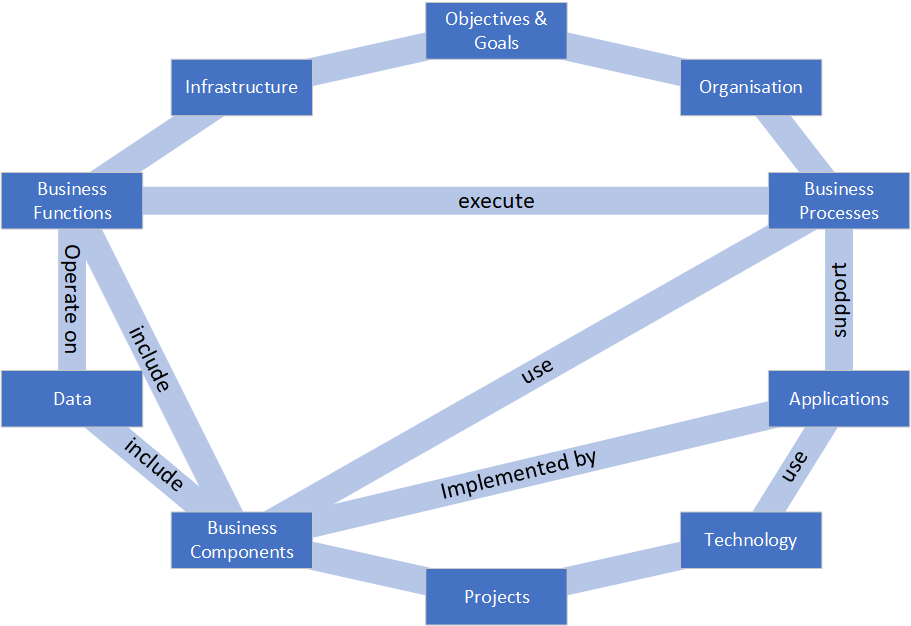Work
Home | Work | Play | Photos | Contact | About
Situation / Current State Assessment
Home > Work > IT Consulting \ Current State Assessment
Transformations
When asked to provide a solution to a problem, step back and look at the environment as a whole. It helps to spend time understanding a situation before assuming you have appropriate ideas about changing it.
The first step in understanding a situation is to bound it. The situation you’re interested in will have a transformation process at its core.
Perspectives
Once you've uncovered the transformation, look at the environment that the transformation happens in. Someone starts a transformation. Someone measures and manages it, and someone decides when it should be changed. There are a number of useful perspectives of the evironment that, if understood, can help deliver a successful solution.
A capability model or similar can sometimes also be useful to bound your assessment. Fun fact - this is one from EDS way back in the mid-2000s - I used it to design a hand-held crime reporting system for the London Met Police -- a memorable project 😃

Organisational Culture
Culture is the outlook that an organisation has. It determines whether a problem is seen as a challenge or opportunity. It determines the nature and direction of decisions. A building society in the UK, for example, is typically more risk-averse than a bank. Government departments usually have complex procurement processes that are ritualistically followed with little or no regard for the suitability or fitness for purpose of the procured product or service. Also pay attention to the mantras. Some popular ones are dogmatic adherence to agile, SharePoint reverence, and the cloud obsession.
All of these (optimism/pessimism; philosophy; corporate ceremony; methodology and so on) are important, until objectivity and balance are lost.
Environment
The environment consists of the immutable aspects of the transformation. This applies to anything that affects a transformation, but is unchangeable by it. An example could be an organisational pre-disposition towards iPads, even though all business services within the organisation are domain-joined to an Active Directory. Such constraints can be identified by assessing the organisation's technology landscape. In addition to the technology landscape, the transformation may be affected by regulatory requirements, competition, suppliers and customers.
Social System
The ways in which people relate to each other and to the transformation have a significant impact on the success or failure of your project. The social system within an organisation consists of its people's roles, values and norms.
- Roles are the social positions that people recognise as important. Contrast this with organisational positions or job titles, such as manager, business analyst or developer. A developer might, for example, assume the role of mentor, confidant or sales person. Each role says something significant about what's important to the transformation and the organisation as a whole.
- Norms describe the expected behaviour of people. Is it ok to arrive at work in shorts and a t-shirt? Some organisations, for example, have the expectation that employees remain signed into instant messenger applications while at the office.
- Values are used to judge perfomance in a role. In the instant messenger example, being signed in might be construed as a sign of productivity.
Asking people directly about roles, norms and values doesn't always work, especially when you're new and have yet to gain people's trust. Instead, pay attention to people's behaviours, body langauage and work habits to make inferences.
Organisational Structure
Conway's law states that the structure of any system designed by an organization is isomorphic to the structure of the organization. Put simply it suggests that software or automated systems end up reflecting the organizational structure they are designed in, or for. Discovering and understanding the mismatches between structure and software architecture might offer opportunities to get those into alignment. Try determine whether interfaces (either human or API) are holdovers from the past and no longer related to the business structure or architecture. Such interfaces might benefit by being moved to a division or department accountable for its data or service.
Power and Politics
Throughout, gain awareness of the political landscape that the transformation occurs in.
< Back to IT Consulting | ^ Back to top
All content copyright © Michael Wittenburg 1995 to 2025. All rights reserved.
Merch (t-shirts designed by my twin)
